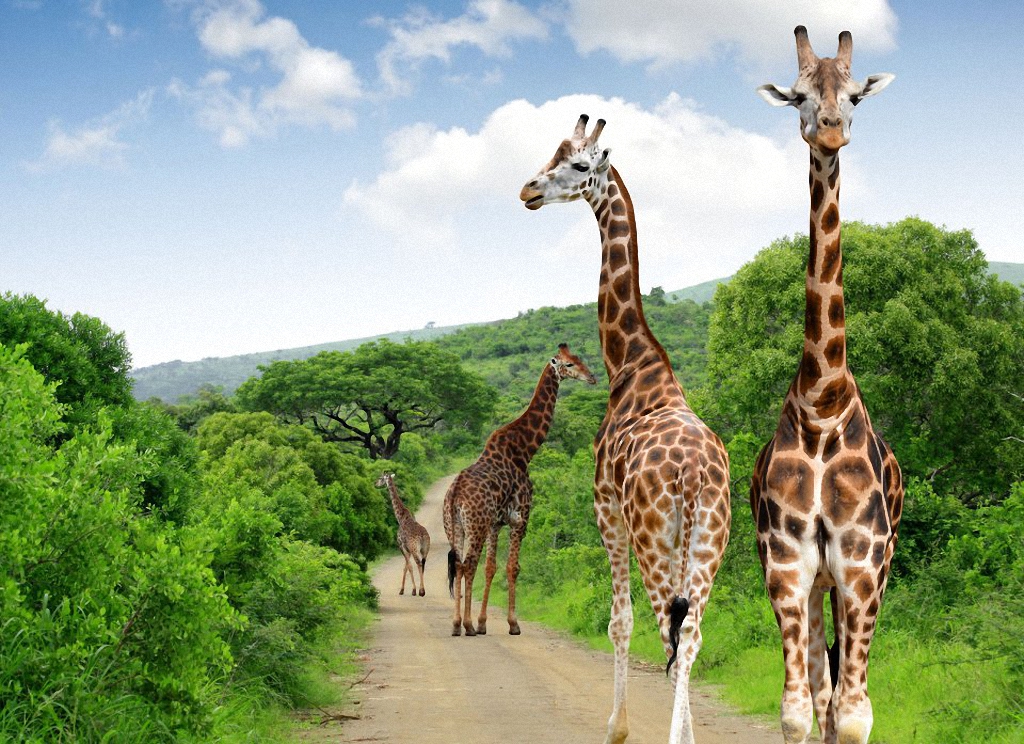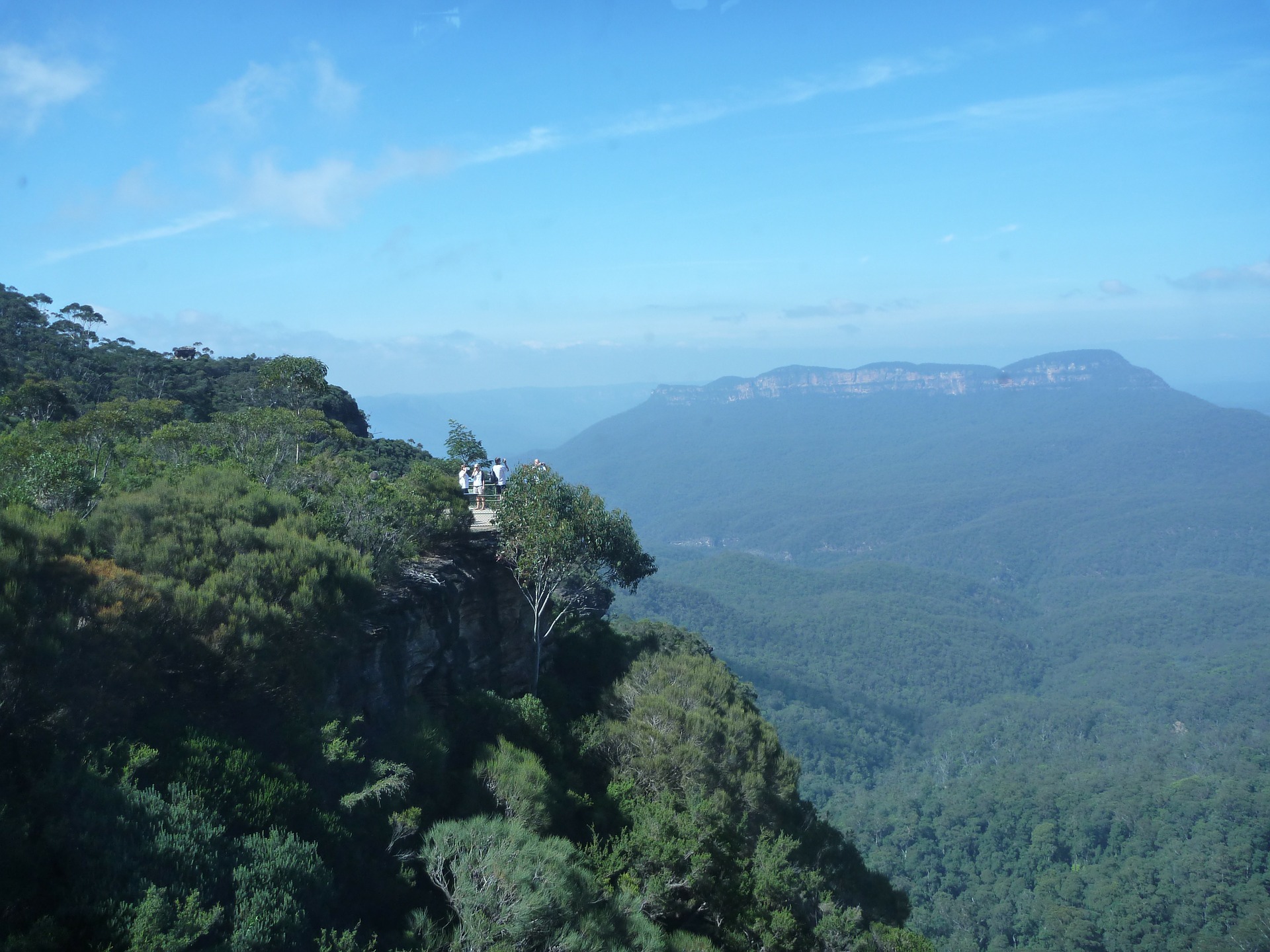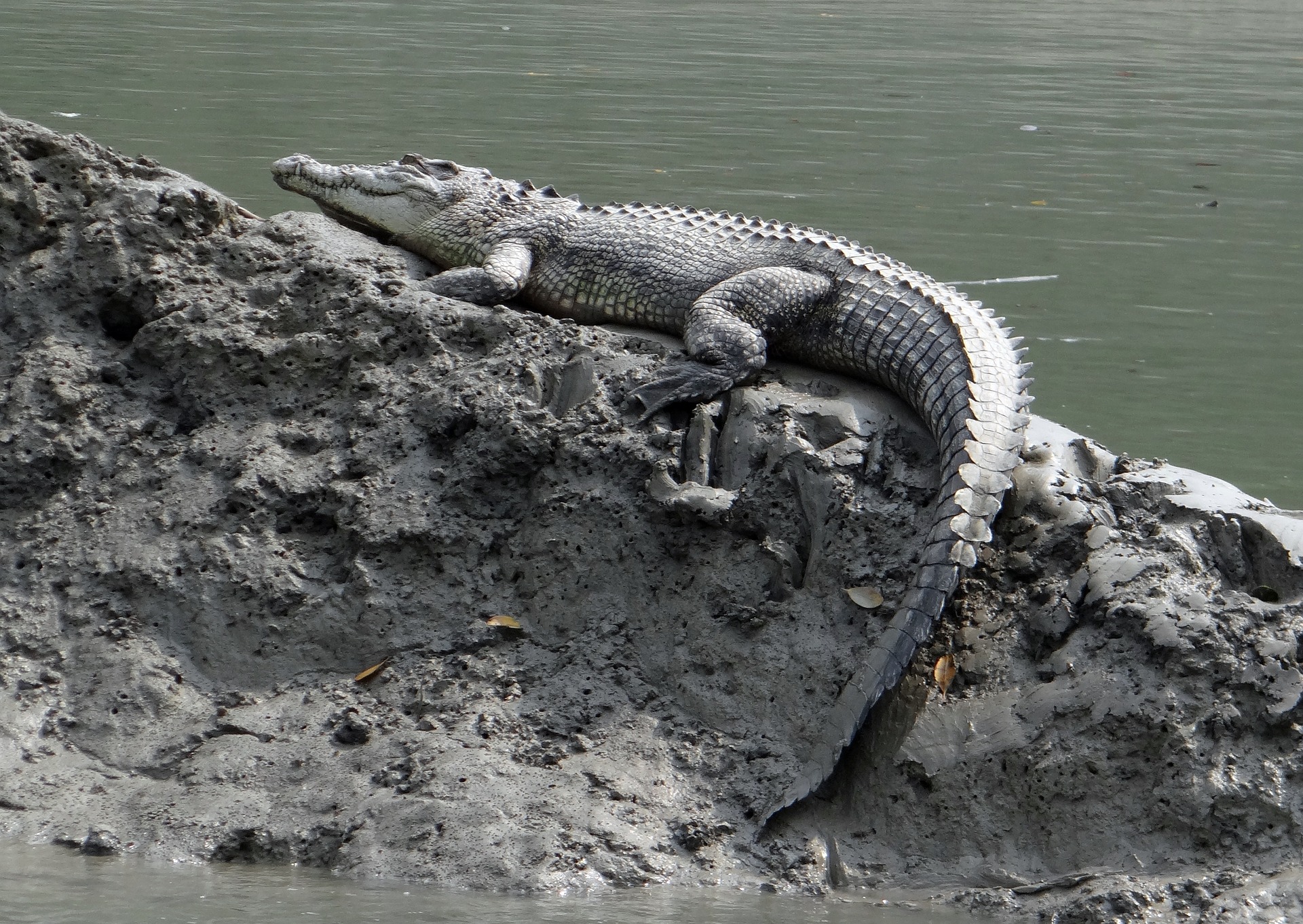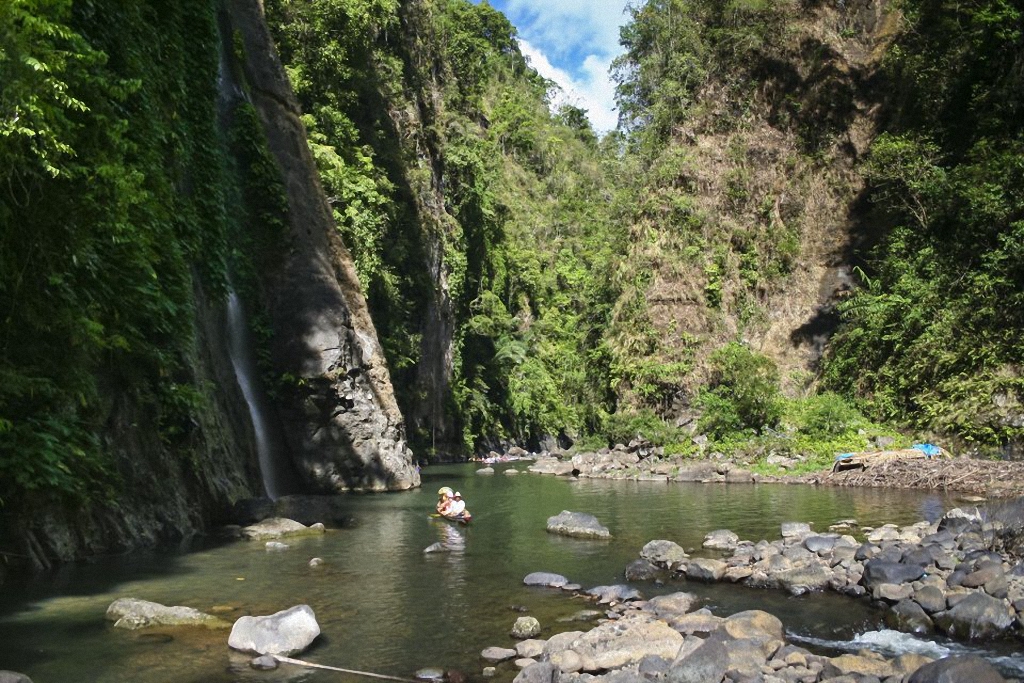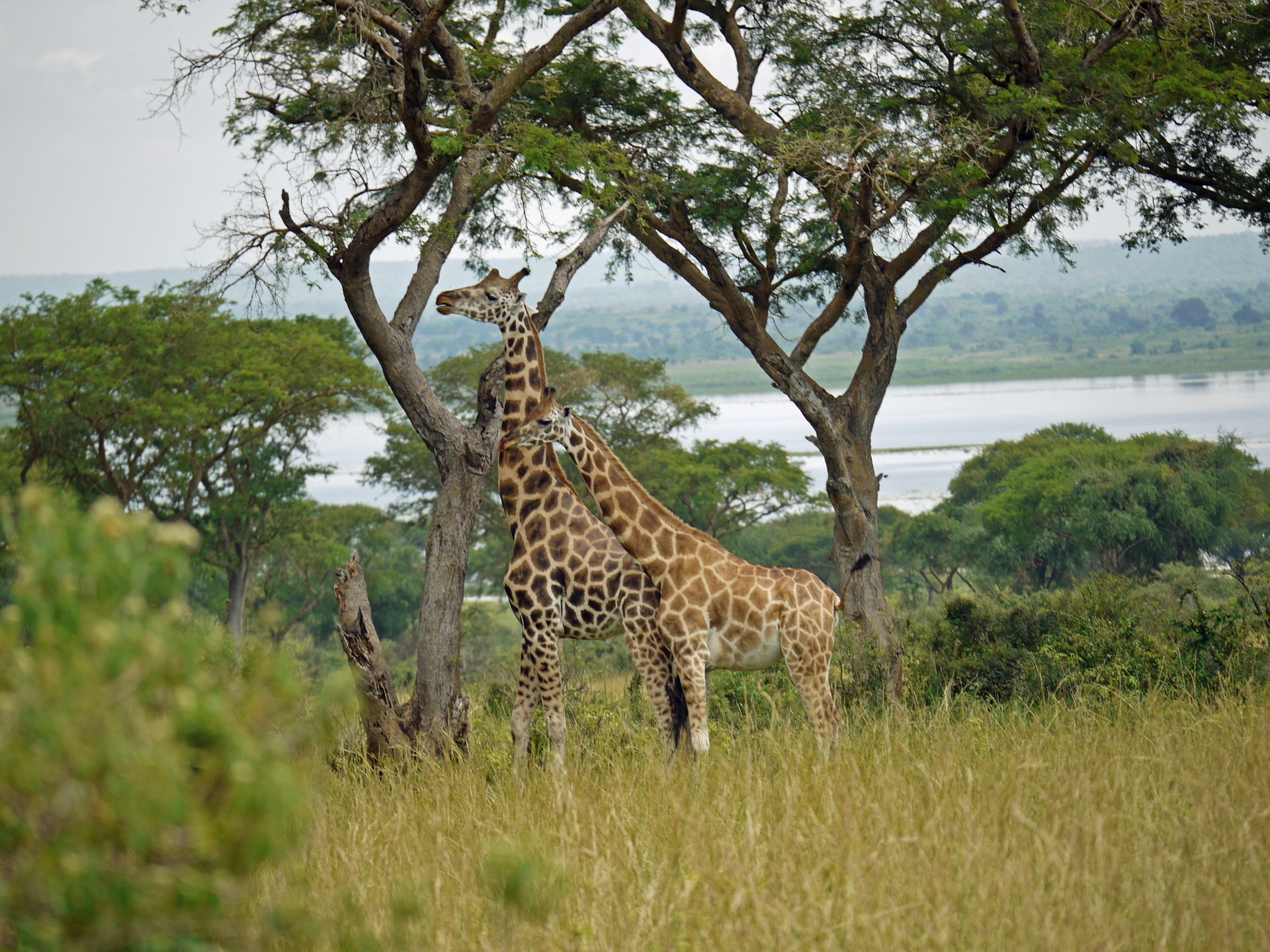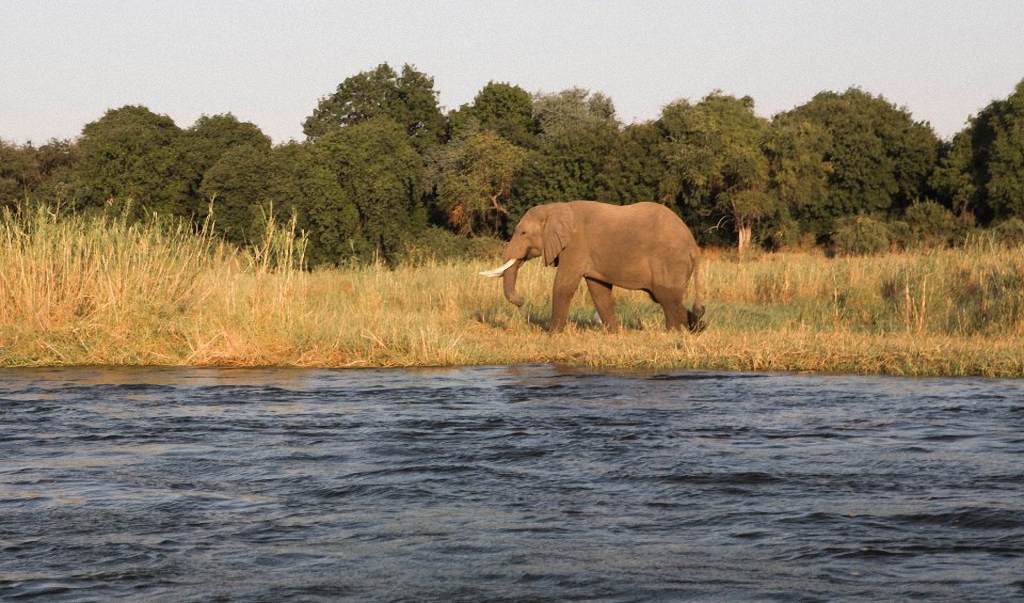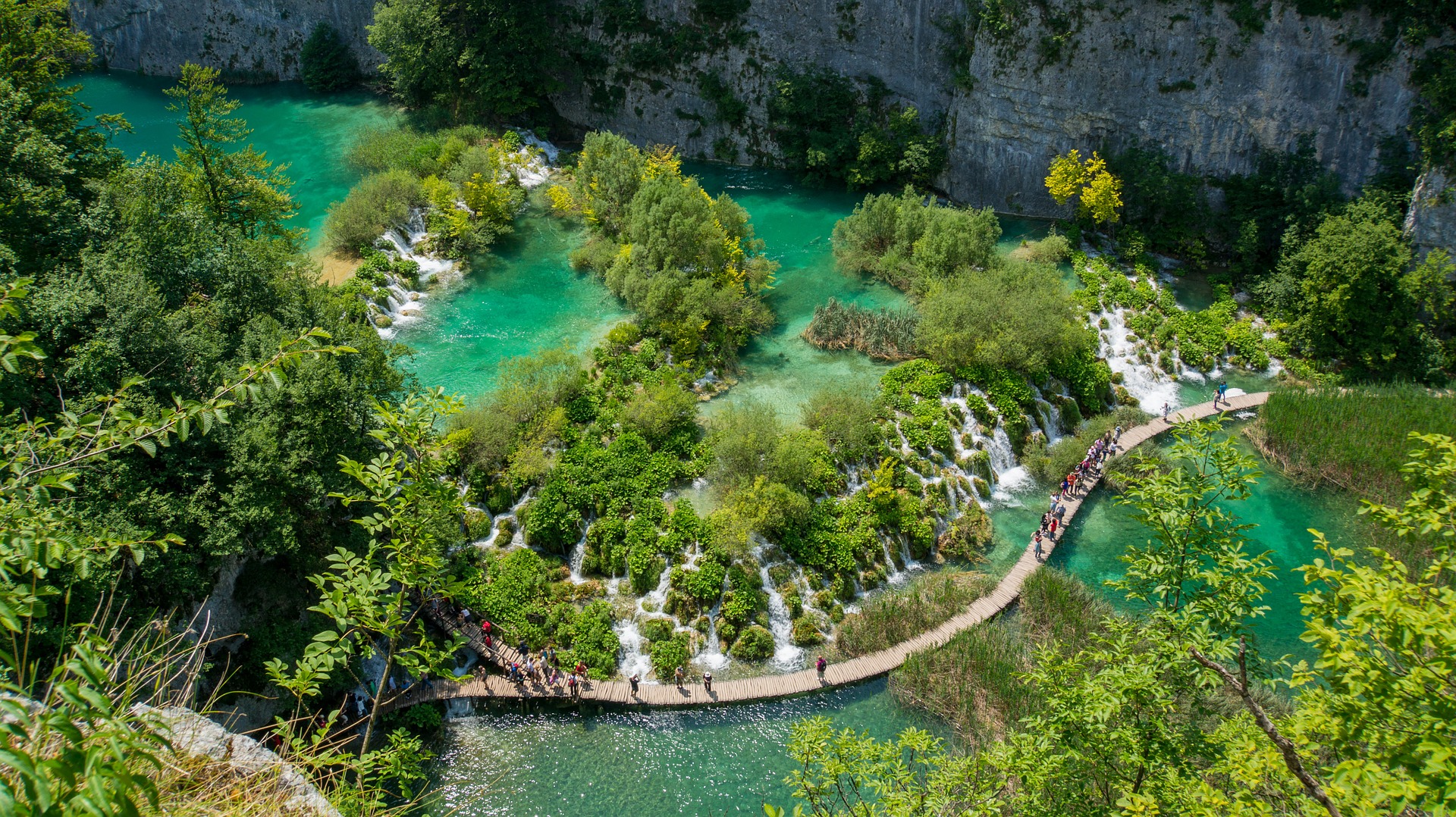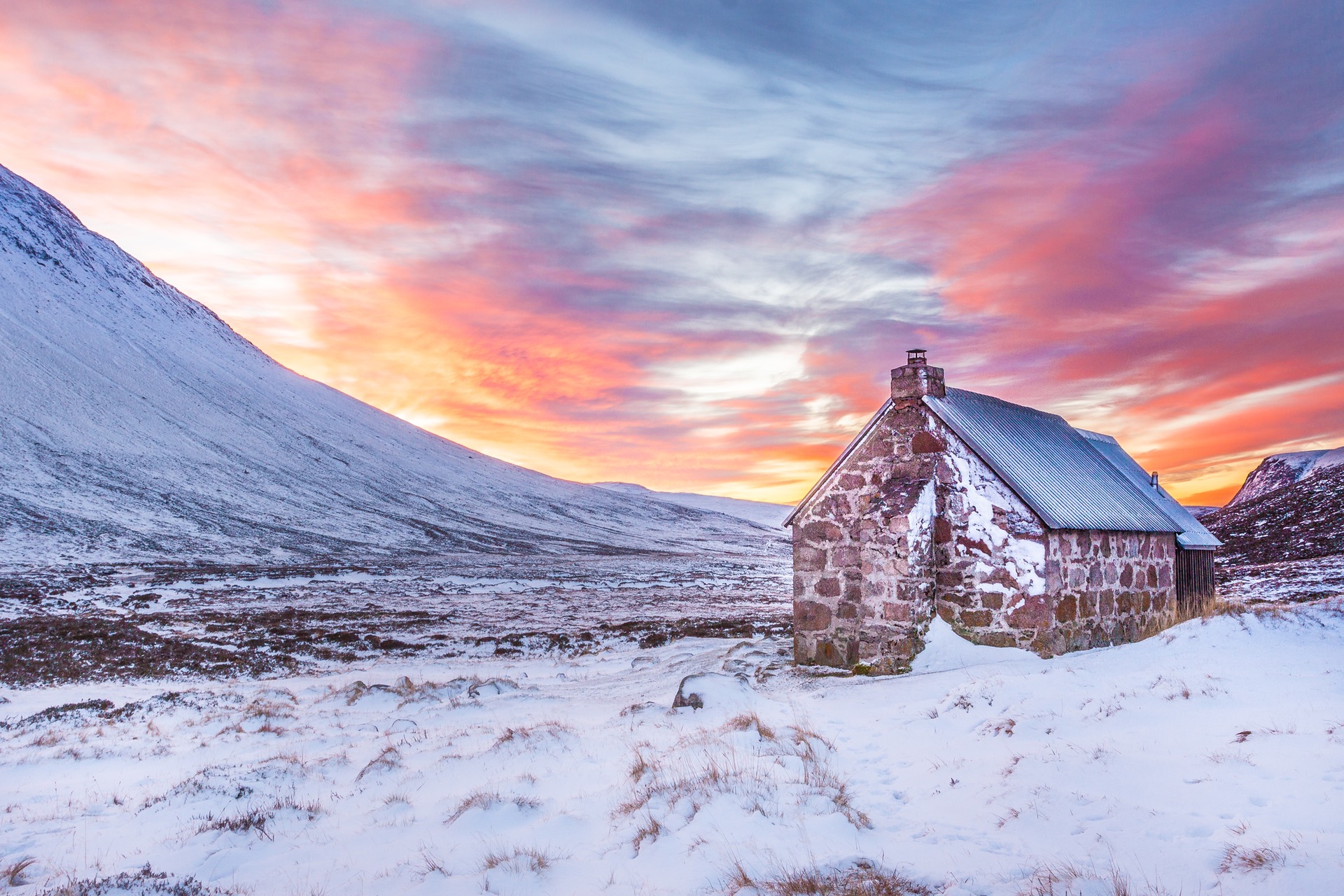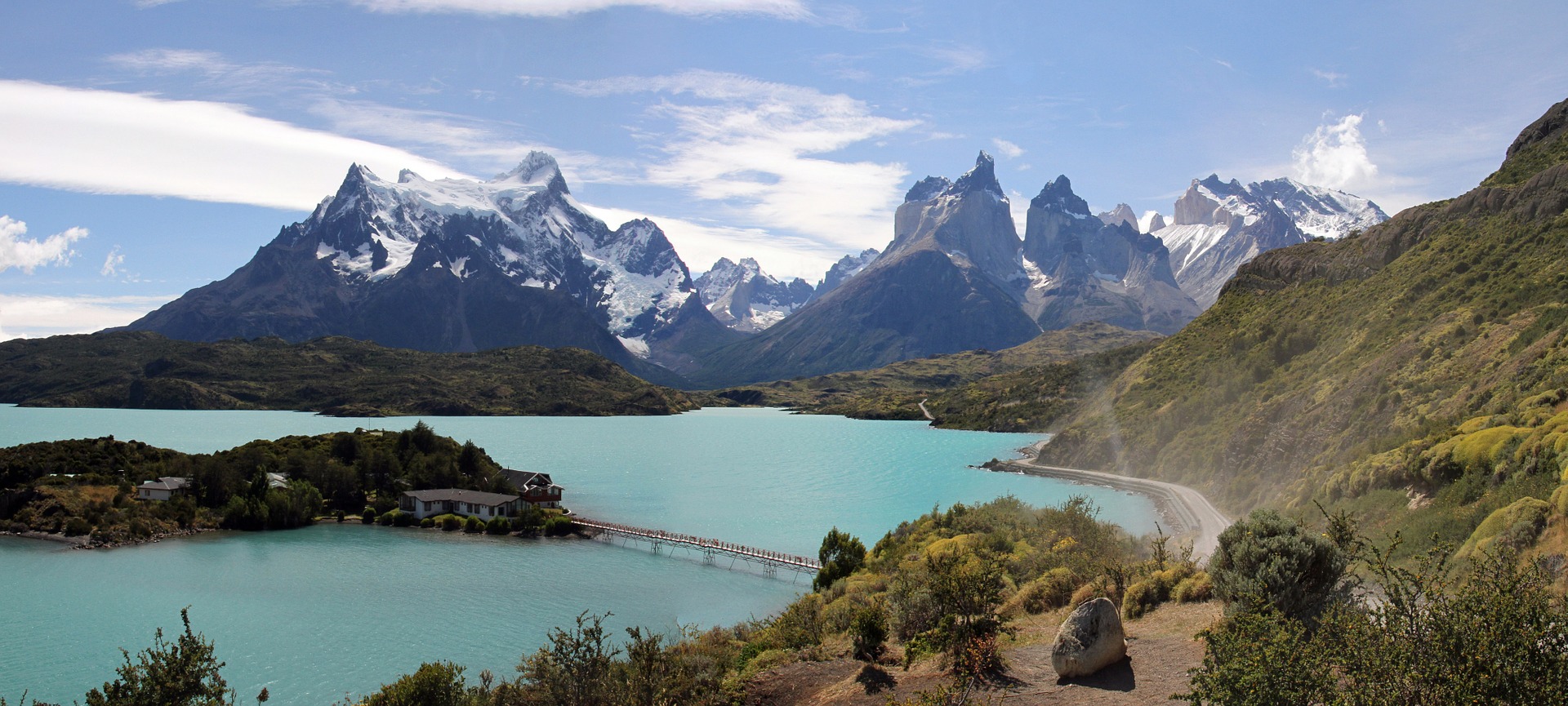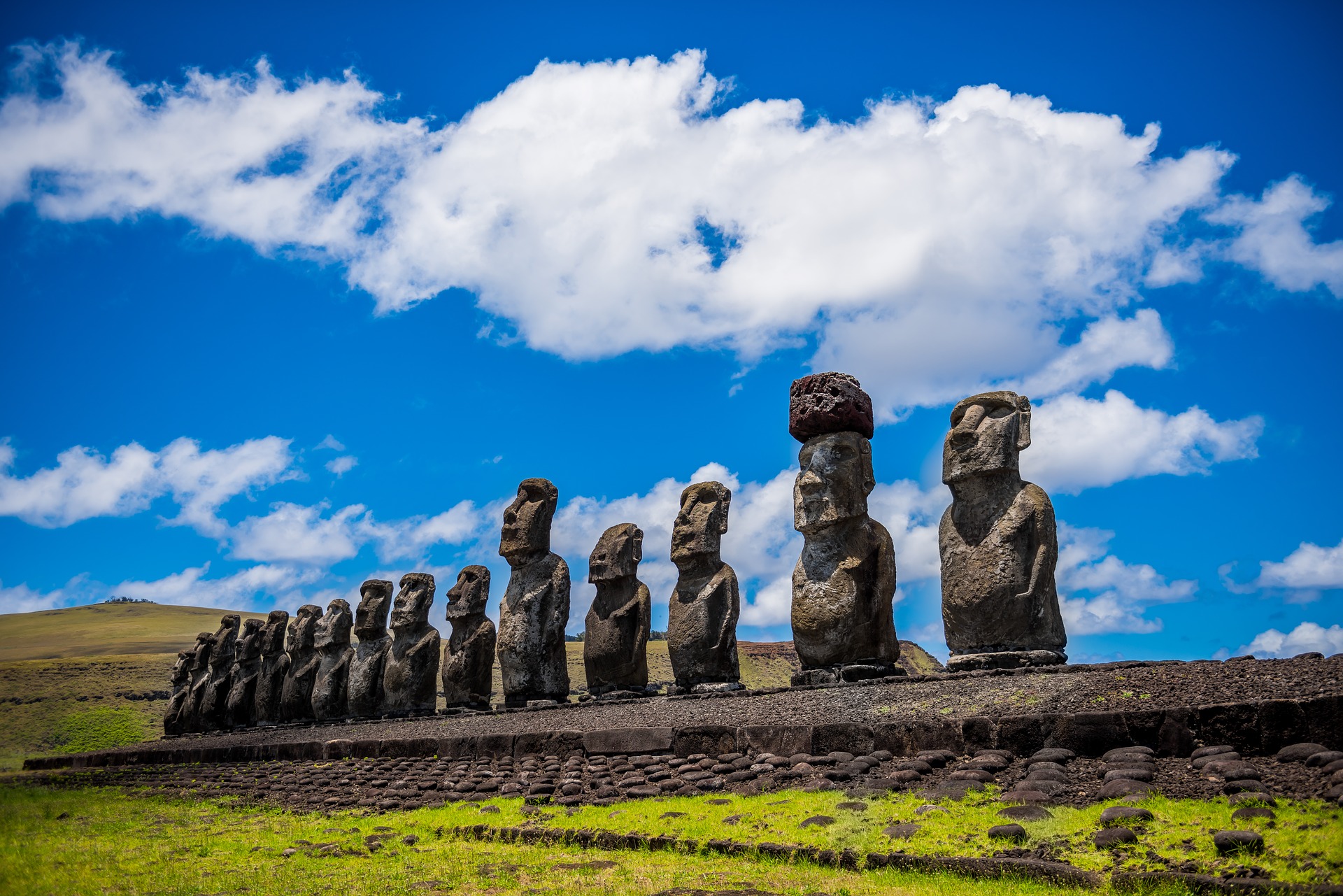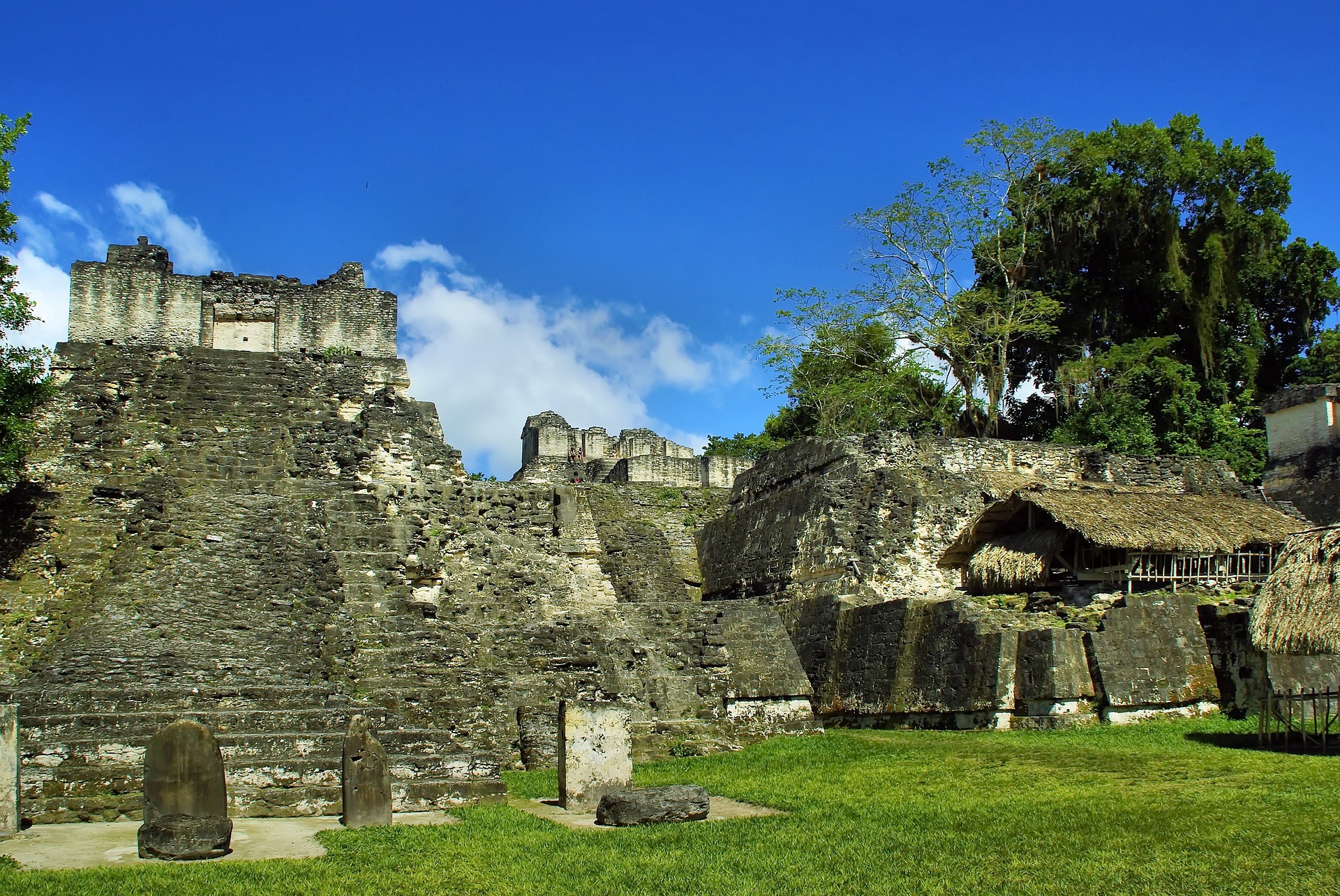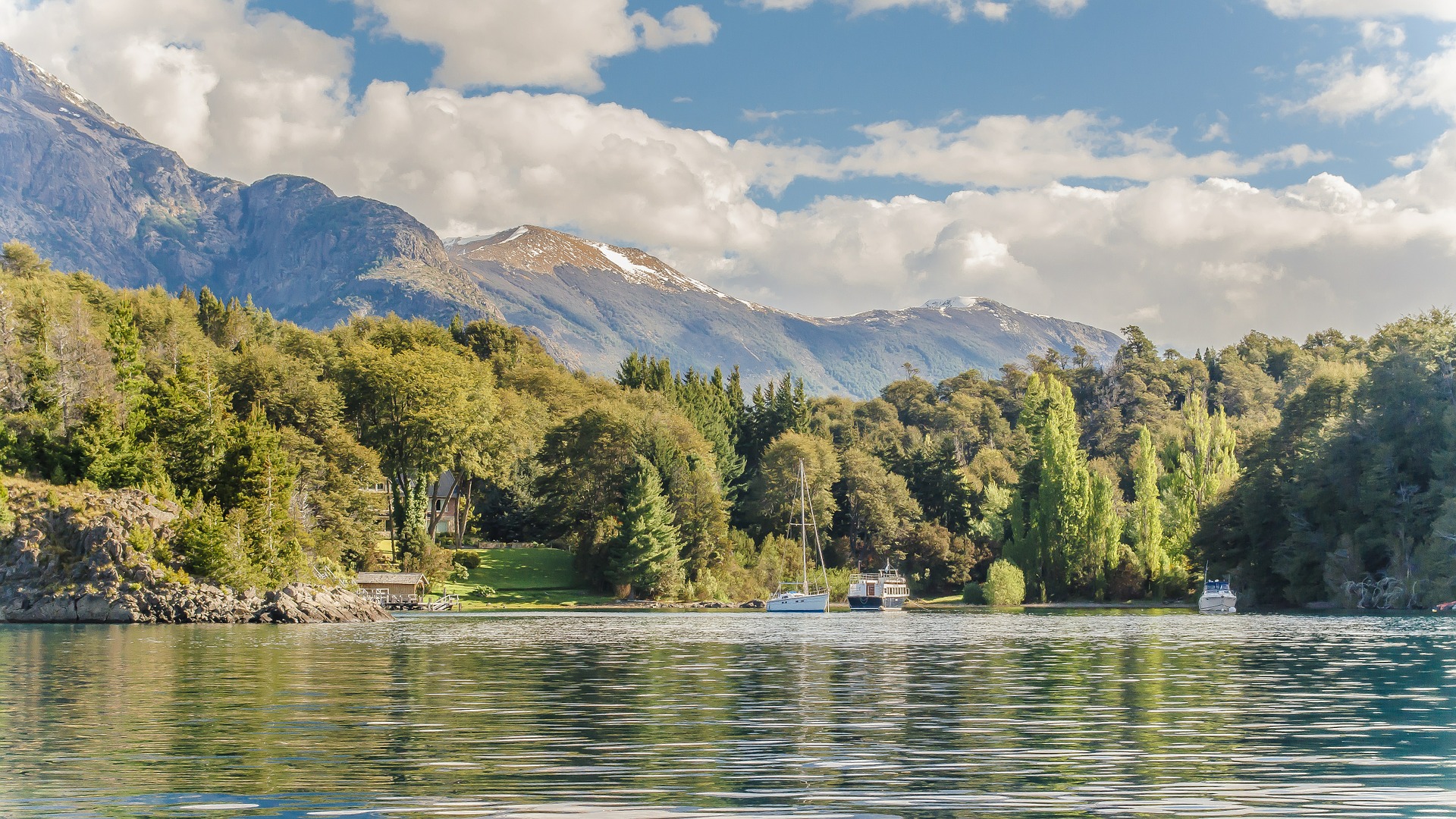The American television channel CNN made a rating of top 30 most beautiful national parks in the world. The evaluation criteria were a beauty of nature, scenic spots, safety and hospitality of local people. The channel drew attention to the fact that national parks of the USA didn’t participate in ranking. I’m sure you want to know all parks included in that list. Well here is the list of the most spectacular national parks that will blow your mind by their beauty and uniqueness.
Paparoa National Park, New Zealand
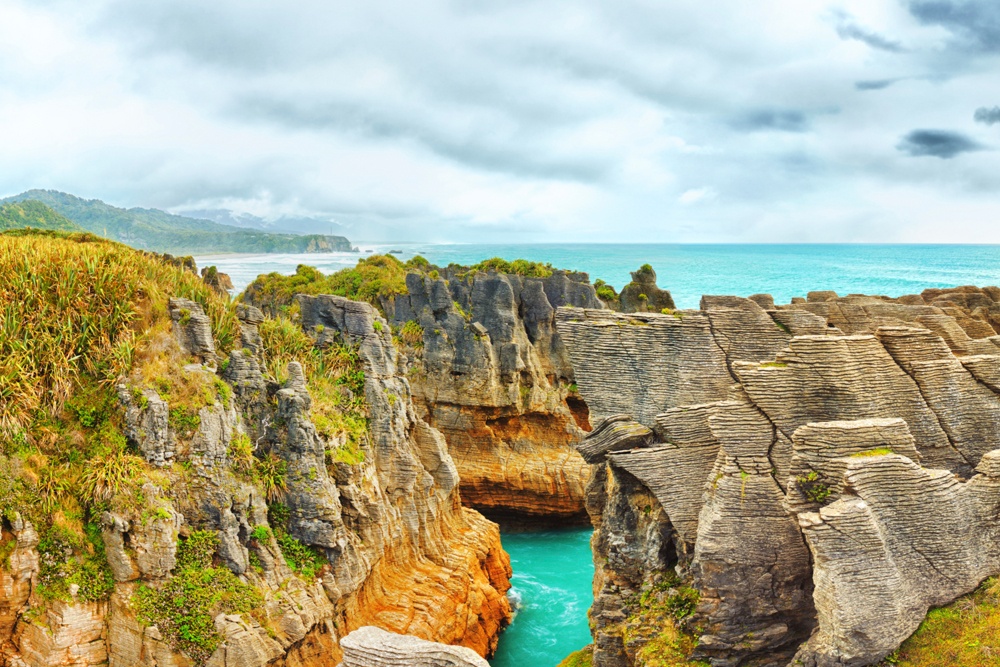
©mapsofworld
Paparoa National Park is on the west coast of the South Island of New Zealand. This stunning park protects a limestone karst area. Pancake rocks (or Punakaiki) and beautiful caves are main attractions of Paparoa. The majority of the park is forested with a wide variety of vegetation. The Paparoa is also famous for its unusual birds, such as tui, bellbird (also known as makomako), Kaka parrot and others.
The Blue Mountains National Park, Australia
The Blue Mountains is another adorable national park located in the Blue Mountains region of New South Wales, in eastern Australia. It’s one of the most popular tourist destinations in Australia. Activities for the visitor include short walks to lookouts above cliffs and waterfalls, overnight and longer walks to more remote areas of the park, canyoning, abseiling, rock climbing and mountain biking. Despite the name ‘mountains,’ the area is an uplifted plateau, dissected by some large rivers. There are several larger mammal species found in the park. The largest native carnivorous predator is the tiger quoll.
Uluru – Kata Tjuta National Park, Australia
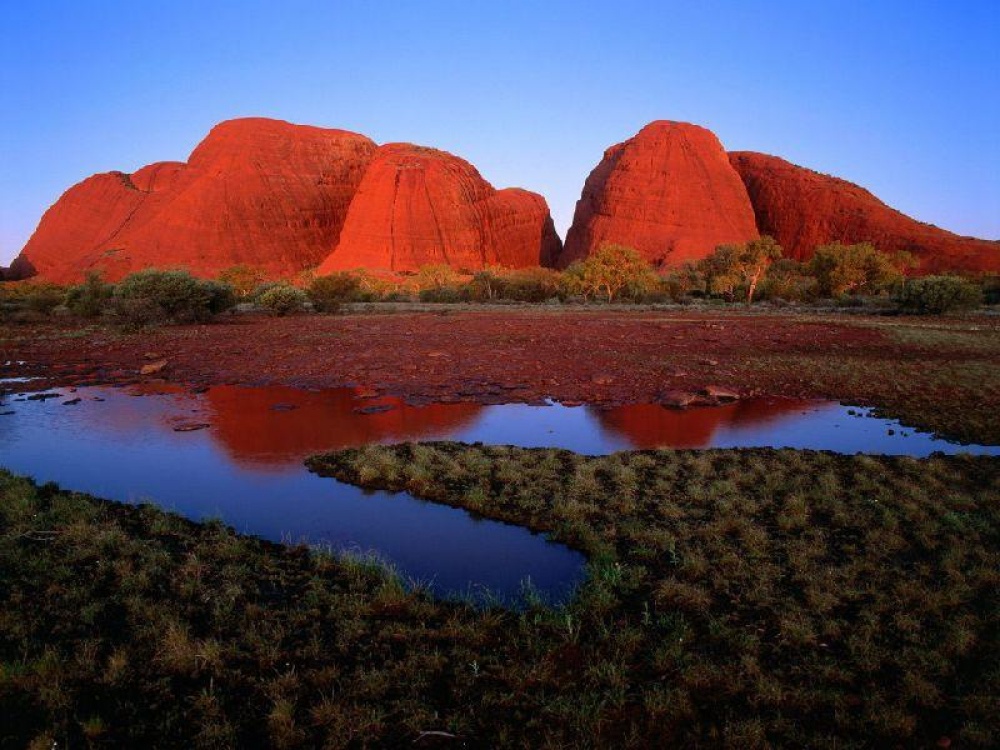
© planetofdream
Uluru – Kata Tjuta is one of the most famous national parks in the world. This park features spectacular geological formations that dominate the vast red sandy plain of central Australia. Uluru – Kata Tjuta is always full of tourists. There are some walks that visitors can take around the major attractions of the park. The Base Walk is one of the best ways to see Uluru. The park is open year-round from sunrise to sunset. The entry fee is $25 and is valid for three consecutive days.
Bandhavgarh National Park, India
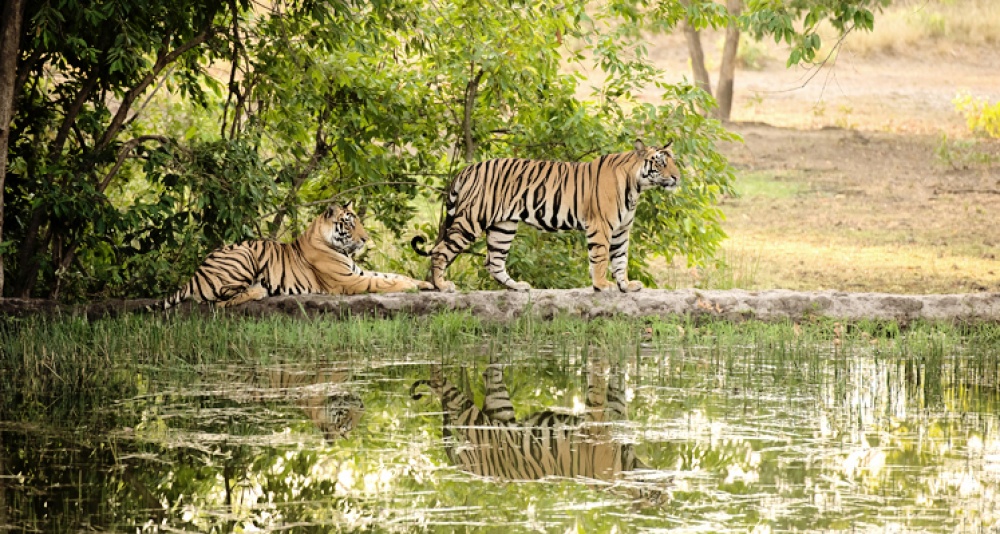
© mouthshut
Bandhavgarh National Park is one of the popular national parks in India located in the Umaria district of Madhya Pradesh. The park has a large biodiversity. The density of the tiger population at Bandhavgarh is one of the highest known in India. The park has a large breeding population of leopards, birds and various species of deer.
Bannerghatta National Park, India
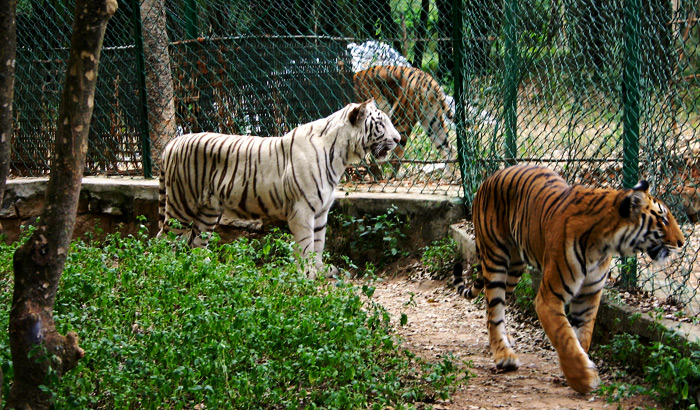
© Prateek Rungta/Flickr
Bannerghatta National Park was founded in 1970 and declared as a national park in 1974. In 2002 a portion of the park, became a biological reserve, the Bannerghatta Biological Park. It is a popular tourist destination with a zoo, a pet corner, an animal rescue center, a butterfly enclosure, an aquarium, a snake house and a safari park. In this park have been recorded one hundred and one species of birds. There are also some ancient temples inside the park for worship. The fauna poses some risk to humans. For instance, in August 2012, a man was trampled to death by an elephant.
Sundarbans National Park, India
The Sundarbans National Park is a National Park, Tiger Reserve, and a Biosphere Reserve in West Bengal, India. It is home to a variety of bird, reptile, tigers and invertebrate species, including the salt-water crocodile. The Sunderban Tiger Reserve located in South 24 Paraganas, West Bengal. Besides tiger, the reserve has a fishing cat, spotted deer, rhesus monkey and wild pigs.
Minneriya National Park, Sri Lanka
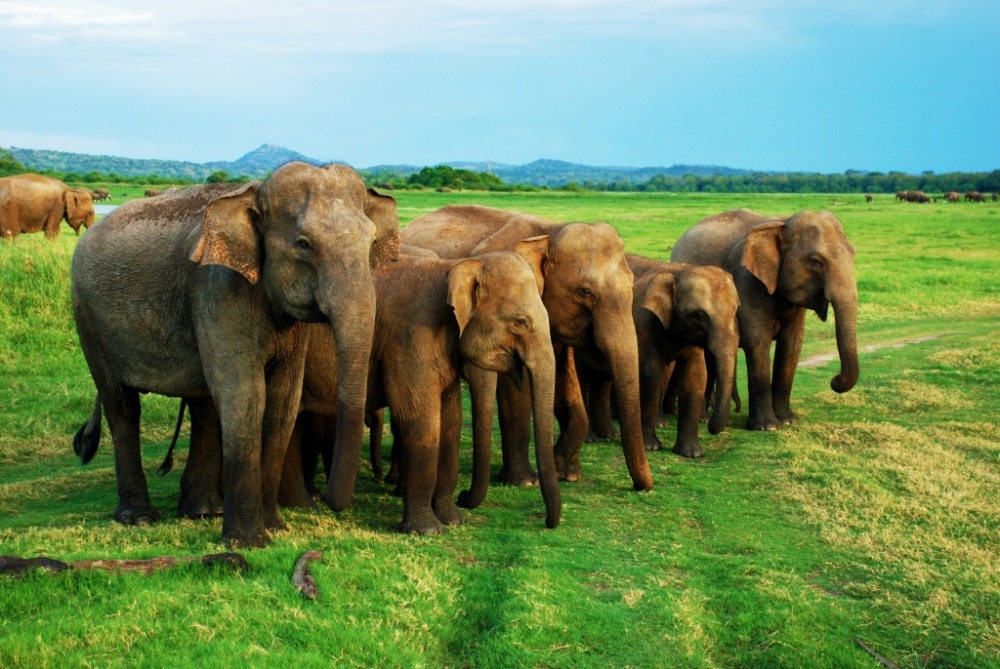
© agentika
Minneriya is a stunning national park in North Central Province of Sri Lanka. The park constrained lots of wildlife, and it is a dry season feeding ground for the elephant population dwelling in forests of Matale, Polonnaruwa, and Trincomalee districts. Tourists visit Minneriya National Park largely because of elephants. But his national park’s fauna species also include a lot of species of mammals, birds, amphibians, reptiles, fish and butterflies. (WOW!)
Pagsanjan Gorge National Park, Philippines
Pagsanjan Gorge is a famous national park and tourist zone located in the province of Laguna in the Philippines. It is one of the oldest parks in the country and one of two protected areas in Laguna. The park protects an area of 152.64 hectares around a series of gorges on the Bumbungan River which leads to Pagsanjan Falls ( It’s one of the most famous waterfalls in the Philippines).
Naejangsan National Park, South Korea
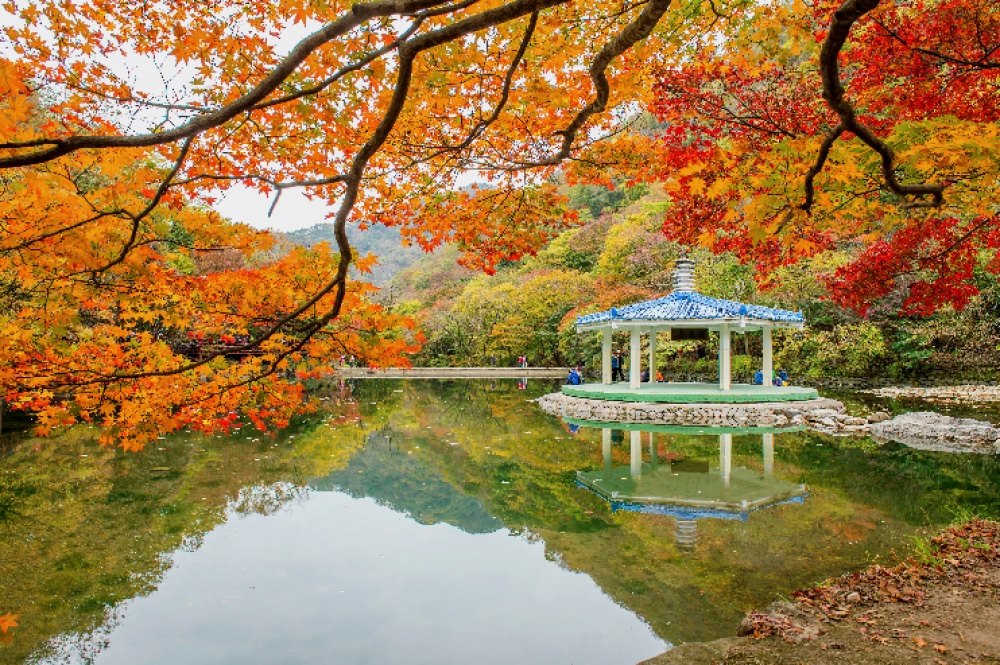
© praewa_koreashopping@hotmail.com/depositphotos
Naejangsan National Park located in the provinces of Jeollabuk-do and Jeollanam-do, South Korea. It’s one of the eight most beautiful places in Korea. The name Naejang means ‘many secrets’ in the mountain. Inside the park, there are famous waterfalls and temples. This breathtaking park is beautiful not only in the fall but also in the spring when the azaleas and cherry blossoms bloom and in the summer when the mountain turns so green.
Zhangjiajie National Forest Park, China
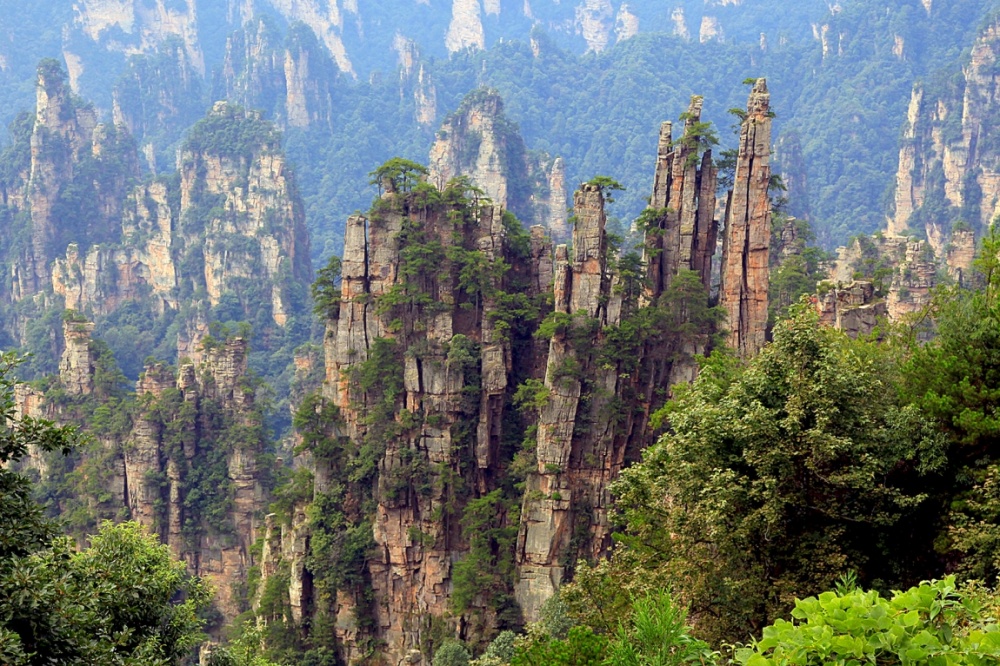
© forum
The Zhangjiajie National Forest Park is a unique national forest park located in Zhangjiajie City, China. The most notable geographic features of the park are the pillar-like formations that are seen throughout the park. They are the result of many years of natural erosion. Zhangjiajie Park is also the zoo, botanical and geological reserve. This place really can impress anyone by its incredible beauty.
Ein Avdat National Park, Israel
Ein Avdat is a beautiful canyon in the Negev Desert of Israel. Archaeological evidence shows that Nabateans and Catholic monks inhabited The Ein Avdat, which spring flows down in a waterfall towards an 8-meter deep pool of water.
Halgurd Sakran National Park, Irak
Halgurd Sakran is a national park in Northern Iraq. With a peak altitude of 3607 meters, Halgurd is the tallest mountain in Iraq. There are a lot of springs and lakes around the mountain that give an attractive view of this area. People can find here even various lawns and different kinds of herbs that can be used as medicine. This beautiful park is very popular among tourists.
Murchison Falls National Park, Uganda
Murchison Falls is a wonderful national park in north-western Uganda. Together with the Bugungu Wildlife Reserve and Karuma Wildlife Reserve, the park forms the Murchison Falls Conservation Area. It’s Uganda’s largest national park. It has a lot of species of waterbirds and mammals as well as Uganda’s largest population of crocodiles and other animals.
Mana Pools National Park, Zimbabwe
Mana Pools National Park is synonymous with the Zambezi River, elephants, lions, remoteness, and wilderness.
This wildlife conservation area and the national park is one of Zimbabwe’s most popular parks. It is a region of the lower Zambezi River in Zimbabwe where the floodplain turns into a broad expanse of lakes after each rainy season. As the lakes gradually dry up and recede, the region attracts many large animals in search of water. The park has the country’s biggest concentration of hippopotami, crocodiles and large populations of the zebra, elephant, and Cape buffalo. The area is also home to other threatened species including the lion, cheetah, Cape wild dog, and near-threatened species including leopard and the brown hyena.
Namib-Naukluft National Park, Namibia
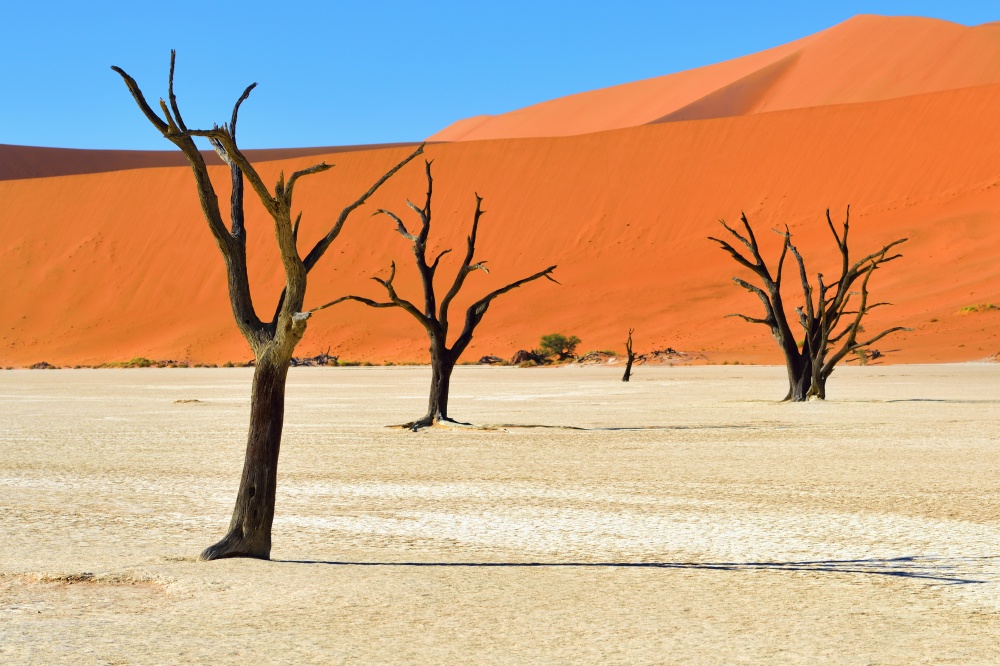
© znm666/depositphotos
Namib-Naukluft is the largest game park in Africa and the fourth largest in the world. The most popular area of the park is Sossusvlei, which is the main visitor attraction in Namibia. A surprising collection of creatures survives in the hyper-arid region, including snakes, geckos, unusual insects, hyenas, gemsboks, and jackals. The park has some of the most extraordinary wildlife and nature reserves in the world. The region is characterized by high, isolated inselbergs and kopjes made up of dramatic blood red granites, rich in feldspars and sandstone. The easternmost part of the park covers the Naukluft Mountains.
Kruger National Park, South Africa
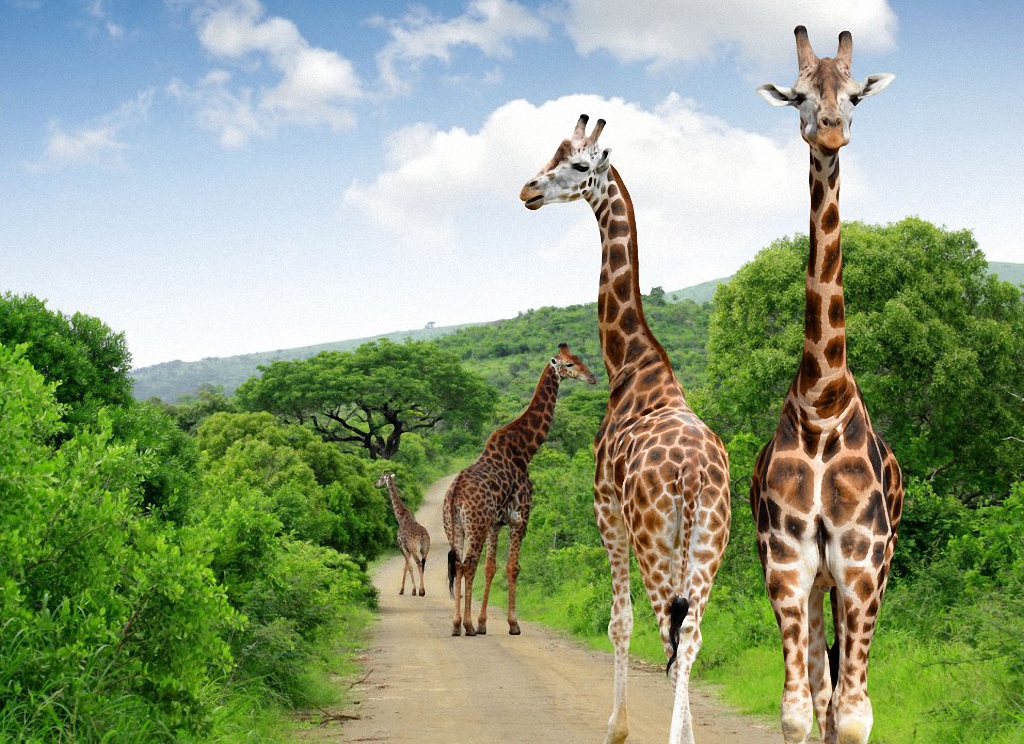
©123 RF
Kruger National Park is one of the oldest game reserves in Africa. It covers a huge area in the provinces of Limpopo and Mpumalanga in northeastern South Africa. The park is part of the Kruger to Canyons Biosphere an area designated by the UNESCO as an International Man and Biosphere Reserve. Out of the 517 species of birds found at Kruger such as lappet-faced vulture, martial eagle, saddle-billed stork, Kori bustard, ground hornbill and many others. Kruger also houses a lot of species of reptile, including black mamba, African rock pythons, crocodiles, lions, leopards, elephants, and giraffes.
Victoria Falls National Park, Zambia
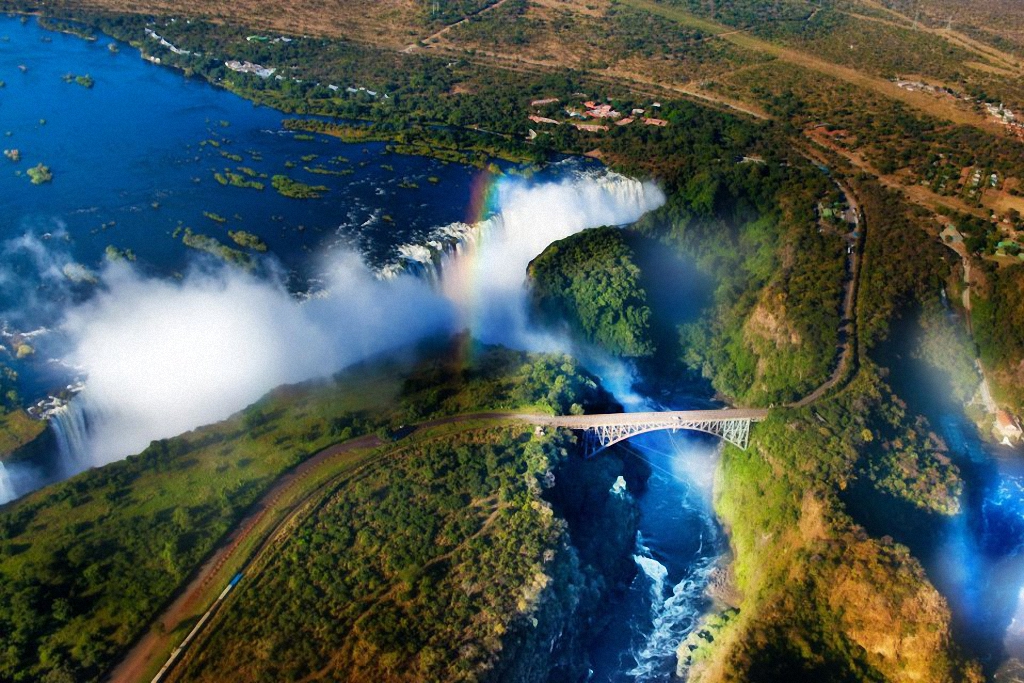
©123 RF
Victoria Falls National Park in north-western Zimbabwe protects the south and east bank of the Zambezi River in the area of the world-famous Victoria Falls. A notable feature of the park is the rainforest which grows in the spray of the falls, including ferns, palms, and liana vines. Visitors have the chance to view the elephant, Cape buffalo, southern white rhinoceros, hippopotamus, elands and a variety of other antelope herds during drives and walking safaris. A bask of crocodiles may be seen in the river, and a nearby Crocodile Ranch offers a safer view of these dangerous animals.
Plitvice Lakes National Park, Croatia
Plitvice Lakes National Park is one of the oldest national parks in Southeast Europe and the largest national park in Croatia. This national park is world-famous for its lakes arranged in cascades. Currently, 16 lakes can be seen from the surface. They are all interconnected and follow the water flow. Natural dams of travertine separate the lakes, that renowned for their distinctive colors, ranging from azure to green, gray or blue. The colors change constantly depending on the number of minerals or organisms in the water and the angle of sunlight. The area of the national park is home to an extremely wide variety of animal and bird species. Rare fauna such as the European brown bear, wolf, eagle, owl, lynx, wild cat, and capercaillie can be found there.
Tatra National Park, Poland

© KopoPhoto/depositphotos
Tatra National Park located in the Tatra Mountains, Poland. This park covers one of the two Alpine mountain ranges in Poland. There are around 650 caves in Tatra, of which the Wielka Sniezna cave system is the longest and the deepest. Six caves of this system are open to the public. The park also has over 30 mountain lakes, called staw, Silver fir and European beech forests, several endemic fauna species such as brown bear, Eurasian lynx, gray wolf, European otter, lesser spotted eagle, and falcon.
Goreme National Park, Turkey
Goreme is a town in the Cappadocia region of central Turkey. The Göreme National Park was added to the UNESCO World Heritage List. Just east of town is the Göreme Open Air Museum, with cave churches and frescoes from the 10th to 12th centuries. Among Göreme’s historically important sites are several churches and many homes and pigeon houses carved straight into the rock formations in the town.
Cairngorms National Park, Scotland
The Cairngorms National Park is the largest national park in the British Isles, located in northeast Scotland. The park covers the Cairngorms range of mountains and surrounding hills. This park has everything from castles and distilleries to family attractions and endless outdoor fun.
Galapagos National Park, Ecuador
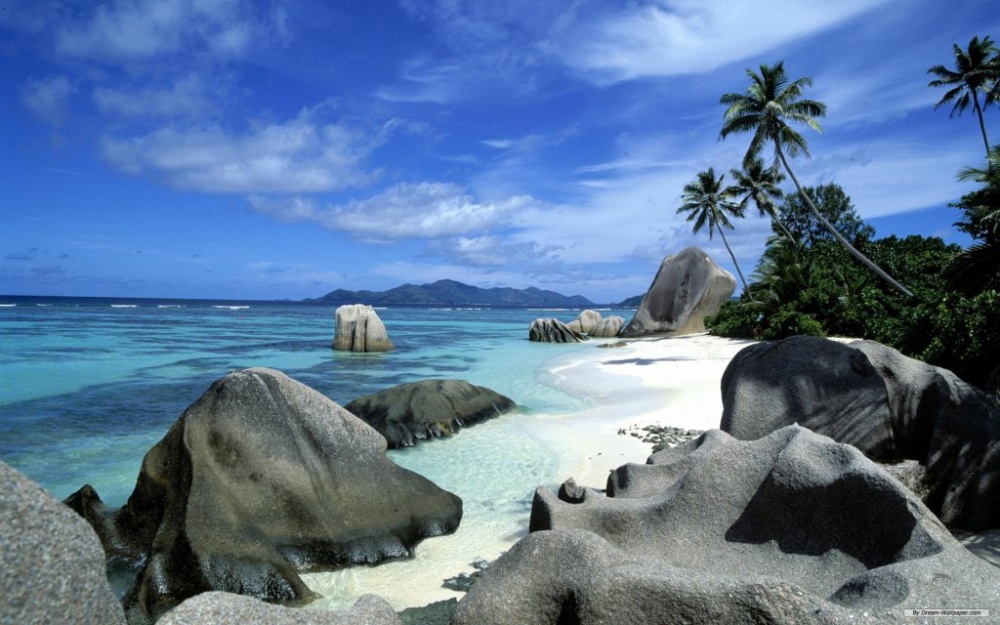
© protravelclub
Galapagos National Park is Ecuador’s first national park and a UNESCO World Heritage Site. About 97% of the entire areas of the Galapagos Islands are part of the National Park system. All tourists who visit this paradise islands on a cruise, or who take daily tours out to the islands, must be accompanied by Galapagos National Park certified guide on every visit.
Canaima National Park, Venezuela
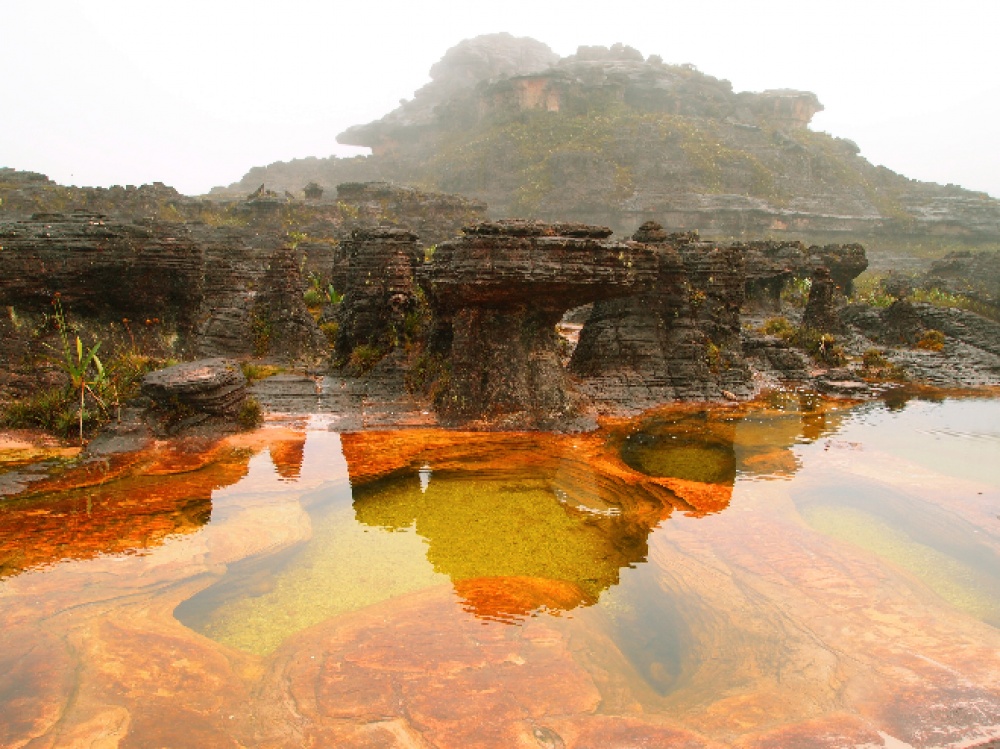
© Ariadna22822/depositphotos
Canaima National Park is the second largest park in Venezuela. About 65% of the park is occupied by plateaus of rock called tepuis, which are a kind of table-top mountain millions of years old, with vertical walls and almost flat tops. These constitute a unique biological environment and are also of great geological interest. Their sheer cliffs and waterfalls create spectacular landscapes. The park includes two of the highest waterfalls in the world, the Angel Falls and the Kukenan, and plenty of waterfalls of lower altitude.
Torres del Paine National Park, Chile
Torres del Paine National Park is a popular national park encompassing spectacular mountains, glaciers, lakes, and rivers in southern Chilean Patagonia. This park has been elected as the fifth most beautiful place in the world by National Geographic. Visiting the park is recommended between September and April, during the southern spring, summer, and early autumn.
Rapa Nui National Park, Chile
Rapa Nui National Park is a protected Chilean wildlife area located on Easter Island, which concentrates the legacy of the Rapa Nui culture. Its fame and World Heritage status arise from the 887 extant stone statues known by the name “moai”, whose creation is attributed to the early Rapa Nui people who inhabited the island around 300 AD. Much of the island has been declared as Rapa Nui National Park which, in 1996 UNESCO designated a World Heritage Site under cultural criteria. As the island is isolated there are many endemic species of animals and plants.
Tikal, Guatemala
Tikal is an ancient Mayan citadel in the rainforests of northern Guatemala. Tikal National Park is one of the few World Heritage properties inscribed according to both natural and cultural criteria for its extraordinary biodiversity and archaeological importance. This park is an outstanding example of the art and human genius of the Maya and has unique elements that illustrate the historical, mythical and biographic data of the Tikal dynastic sequence.
Gandoca-Manzanillo National Wildlife Refuge, Costa Rica
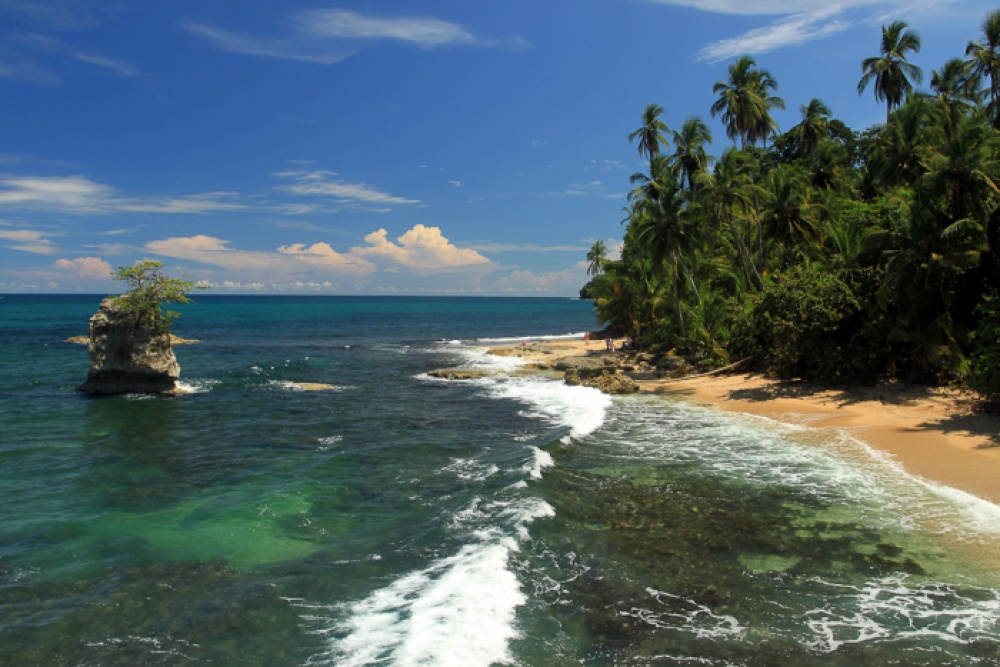
© theadventureahead
Located in Costa Rica’s southeastern Talamanca region is the large Gandoca-Manzanillo Refuge, a collection of rainforest and wetland habitat complete with a coral reef. The tropical vegetation and remote location draw a plethora of tropical birds to the park (more than 360 species including the elusive harpy eagle). A wide variety of fauna inhabits the park such as manatees, dolphins, Venus sea fans, and Eagles. A combination of the extraordinary beauty of wildlife, beaches, and the ocean, as well as the local culture, make it a truly unique place.
Nahuel Huapi National Park, Argentina
Nahuel Huapi National Park is the oldest national park in Argentina, which located in the Andes at an altitude of 767 meters above sea level. The park surrounds Nahuel Huapi Lake in the foothills of the Patagonian Andes. There are many lakes, rapid rivers, waterfalls, snow-clad peaks, glaciers and extensive forests in this outstanding national park.
Los Glaciares National Park, Argentina

© Serjio74b/depositphotos
Los Glaciares National Park is a federally protected area in Santa Cruz Province and the largest national park in Argentina. The park houses a representative sample of the Magellanic Subpolar Forest and western Patagonian Steppe Biodiversity in a good state of conservation. Los Glaciares, of which ice covers 30%, can be divided into two parts, each corresponding with one of the two elongated big lakes (Lake Argentino and Lake Viedma) partially contained by the park. This great park is a major attraction for international tourists.
Iguazu National Park, Argentina
Located in Misiones Province in the Northeastern tip of Argentina and bordering the Brazilian state of Parana to the north, Iguazu National Park, jointly with its sister park Iguaçu in Brazil, is among the world’s visually and acoustically most stunning natural sites for its massive waterfalls. The fauna of the park includes several rare and threatened species: jaguar, jaguarundi, South American tapir, ocelot, anteater, the harpy eagle, Yacare caiman and many others. High waterfalls surrounded by tropical nature…mmm… it is one of the most beautiful and spectacular places in the World!

